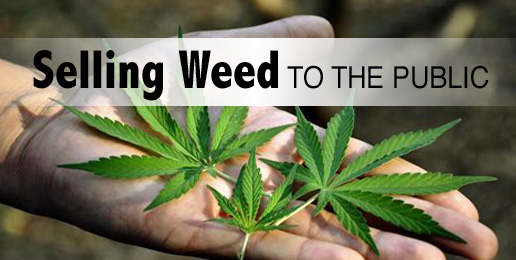
With the information we have provided, we hope that you will become armed with solid facts in the event your state lawmakers hold a town hall meeting to tell you the benefits of legalizing high potency marijuana.
Please don’t ignore this issue and try to convince yourself that legalization will have no impact on your family.
The information below exposes what other states are experiencing. This is information that Big Marijuana and its proponents do NOT want you to know.
PLEASE DON’T GET OVERWHELMED! Browse the topics and choose which issue concerns you most. You don’t have to be an expert on everything.
Even without this overwhelming evidence, a simple question should be asked of lawmakers.
TAX REVENUE
Moody’s Investors Service investigated states that have legalized and discovered marijuana sales “make up a relatively small share of state general fund revenues…”
California lawmakers have proposed a bill this year to slash taxes on legal marijuana in an effort to compete with the growing black market.
After 6 years of legalization, the tax windfall Colorado lawmakers were expecting is less than 1 percent for each year since legalization. (Page 124)
For every dollar Colorado gains in tax revenue, it costs at least $4.50 to mitigate the negative effects on society. (Page 4)
TRAFFIC FATALITIES
In 2013, the year Colorado legalized high potency marijuana, there were 47 traffic fatalities where the driver tested positive for marijuana. In 2016, that number rose to 123 – a 145% increase. (Pages 14, 28)
A May 2016 report released by the Governors Highway Safety Association found that 22.3% of fatally injured motorists tested positive for marijuana, a number which has “increased substantially” in recent years. Experts say the numbers are vastly under reported because if they tested positive for alcohol, no further testing was done.
AAA News Room reported that fatal car crashes involving drivers who recently used marijuana doubled in Washington after legalization.
Seventy six percent of total Colorado DUIDs involve marijuana. Source: Colorado State Patrol 2016 (1:02:19)
There were 71 Colorado traffic deaths related to marijuana in 2013, the year of legalization. In 2016, the number rose to 147. (1:03:47)
“Driving while high on marijuana causing spike in fatal accidents.”
DRIVING UNDER THE INFLUENCE OF DRUGS (DUIDs)
In 2016, 76% of total DUIDs involved marijuana and 38% of total DUIDs involved marijuana only. Source: Colorado State Patrol, CSP Citations for Drug Impairment by Drug Type (Page 24)
From survey responses collected from over 11,000 anonymous marijuana users, the percentage of marijuana users who admitted to driving high within the last year was 69%. Source: The Colorado department of Transportation (Page 18)
ER VISITS, HOSPITALIZATIONS, POISON CONTROL CENTERS
From 2006-2008, before commercialization, there were 4,070 marijuana-related hospitalizations in Colorado. From 2009-2012, post commercialization, there were 5,933. From 2013-2015, after recreational marijuana legalization, with only 9 months of comparable data in 2015, there were 10,204. Source: Colorado Hospital Association, Hospital Discharge Dataset. (Page 39)
ER visits related to marijuana increased 52% after legalization. Source: Colorado Department of Public Health and Environment (Page 35)
Marijuana-related hospitalizations increased 148% after legalization. Source: Colorado Department of Public Health and Environment (Page 35)
Marijuana only exposures more than tripled in the 5-yr average, post legalization, compared to the 5-yr average prior to legalization. Source: Colorado Department of Public Health and Environment (Page 35)
In 2009, the first year of commercialization, there were 18 marijuana-only exposure calls to Colorado’s poison and drug center. By 2017, that number rose to 179. Source: Rocky Mountain Poison and Drug Center Colorado Hospital Association, Hospital Discharge Dataset. (Page 43)
Hear testimony from Pueblo, Colorado ER physician, Dr. Karen Randall, on how marijuana has impacted her hospital and ruined her town.
MARIJUANA INDUSTRY TARGETS YOUTH
Billboards near schools, marijuana discounts “with student ID”, candy and other sweets – all attractive to children. (Starting at 55:13)
Almost 60% of new marijuana users each year are under age 18. Nine percent of 8th graders say they have vaped in the past month. Source: U.S. NSDUH 2014 Survey (Starting at 52:49)
The latest 2014/2015 results show Colorado youth ranked #1 in the nation for past month marijuana use, up from #4 in 2011/2012 and #14 in 2005/2006. (Page 33)
The top ten states with the highest rate of current marijuana youth use were all medical marijuana states, whereas the bottom ten were all non-medical marijuana states. (Page 33)
In Colorado, from 2013 to 2015, marijuana use increased 14% among high school seniors, 19% among juniors, 96% for 7th graders and 144% for 6th graders. (Page 34)
“So far the only thing that the legalization of marijuana has brought to our schools has been marijuana.” Source: Dr. Harry Bull, Superintendent of Cherry Creek Schools, one of the largest school districts in CO.
MENTAL DISORDERS
“It is now incontrovertible that heavy use of cannabis increases the risk of psychosis.” Source: The British Journal of Psychiatry Volume 212, Issue 4, April 2018, pp 195-196
“The risk of individuals having a psychotic disorder showed a roughly three-times increase in users of skunk-like cannabis compared with those who never used cannabis…” Source: The Lancet Psychiatry
“Common mental disorders induced by marijuana includes anxiety, depression, personality changes and psychosis.” Source: Journal of Addiction and Research Therapy, January 17, 2017
HOMELESSNESS
In 2013, Posada, a government agency in Pueblo, Colorado, serviced 25 homeless individuals. By 2016, they had 7,500 new homeless individuals requesting help. (Starting at 37:35)
Low income housing in Pueblo is at 99% occupancy. Homeless people live on the streets, down by the river and in campers at Walmart. (Starting at 38:37)
PATTERN FOR LEGALIZATION SEEN IN EVERY STATE.
THE “GREY” MARKET IS BORN. (Starting at 53:02)
- Normalize it. Create a public campaign calling it medicine, straight from Big Tobacco playbook.
- Make false claims of its “medical” benefits, thereby reducing perception of harm.
- Open “medical” marijuana dispensaries. All of this may take years, but that’s OK with Big Marijuana because of the financial benefits down the road.
- Create a new market that lasts a lifetime – 8 to 12 year-olds.
- Commercialize it. Run billboards and ads that include unproven claims of “medical” benefits, discounted coupons, etc.
- Market high-THC-content edibles that are attractive to children and adults.
- While media campaign is underway, which includes town hall meetings by proponents, the lack of harm and benefits to everyone is highly stressed.
- During all of the above, perception of risk bottoms out and people become comfortable with full legalization.
- Legalization occurs, allowing 5 plants per individual to be grown in homes. Because there’s no way to oversee, tax, or regulate home grows, people see it as a way to make a lot of money, selling it much cheaper than dispensaries and the “grey” market is born.
ENVIRONMENTAL IMPACT
Banned in the U.S., Europe, and Canada, Carbofuran, a toxic rodenticide, has been found at 60%-70% of California grow sites. One quarter of a teaspoon will kill a 600 pound lion. “It’s an emerging threat to wildlife, the environment, and human health within the United States.”
Lethal pot farms are popping up all across California on public and private land with $0 budget for reclamation. (Starting at 2:58)
Water sources, soil, and wildlife are being poisoned by drug trafficking organizations in California. (Starting at 41:42)
One marijuana plant uses 900 gallons of water per 150 day growing season. Billions of gallons of water are being diverted by illegal grow operations in California. On one grow site alone, over 29 million gallons of water was pillaged. (Starting at 43:11)
50% OF EVENT PLANNERS NOT COMING BACK TO COLORADO
Comments received by Visit Denver from Post-Convention Meeting Planner Surveys (Starting at 105:40)
Homeless issue and drugs…didn’t feel safe
Homelessness and the cleanliness of 16th Street Mall
16th Street Mall and Civic Center – we are really seeing a decline in cleanliness and safety in this area
The 16th Street Mall seems pretty seedy, especially with the homeless people. It made guests feel uncomfortable and gave a perception of not being safe
Vagrants on the 16th Street Mall and the grunge youth present
Your youth homeless population is disheartening
Homeless population and unsavory activity visible in main traffic area
Also many comments about feeling uncomfortable with the street scene
Please call us if you have any questions.



















